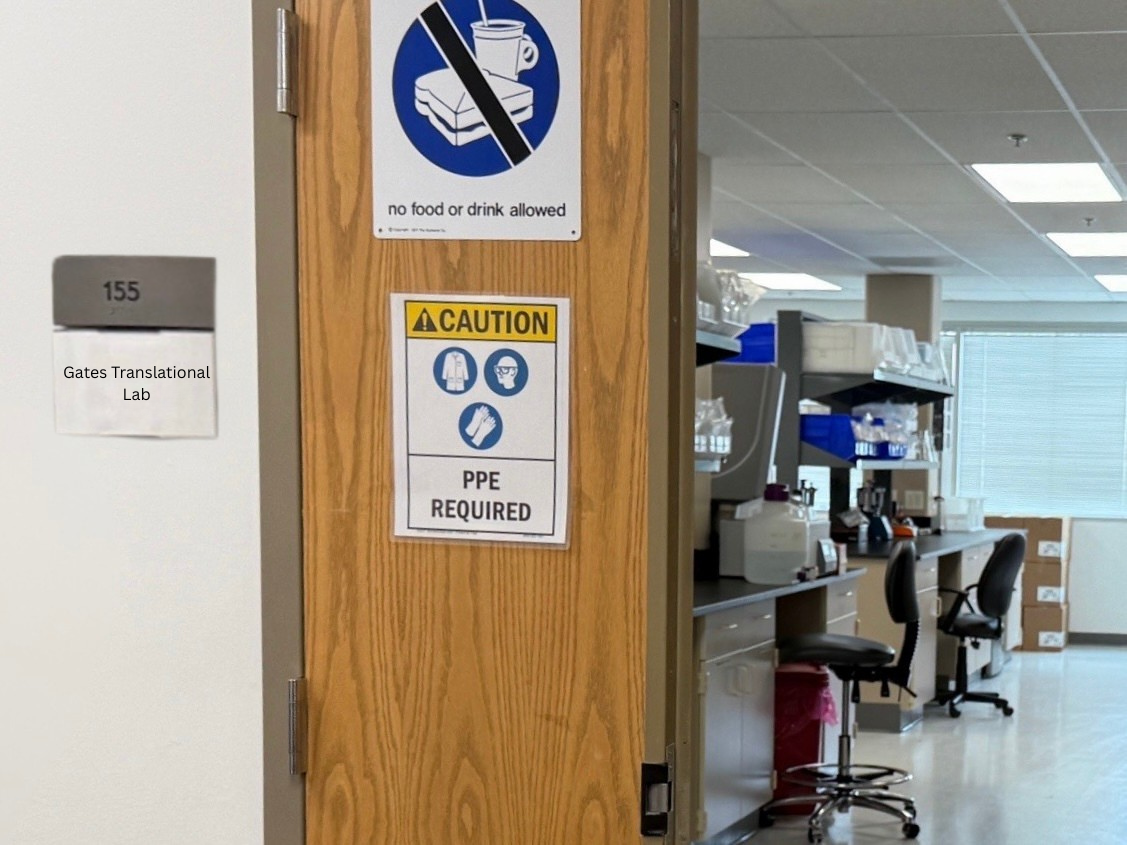Not long after the technology to produce induced pluripotent stem cells (iPSCs) from adult cells was developed in 2007, Mark Petrash, PhD, then-professor and vice chair of research in the Department of Ophthalmology at the University of Colorado Anschutz School of Medicine, recognized how this breakthrough would impact ophthalmology research and innovation. After joining CU Anschutz in 2008, Petrash became involved with the recently formed Gates Center for Regenerative Medicine and advocated for the goal to find a stem cell-based cure for age-related macular degeneration (AMD). The Gates Center (forerunner of Gates Institute) was also following the discoveries around iPSCs, cells that can generate all the different cell types found in the body (such as retinal cells).
“Leadership in ophthalmology saw the unique opportunity to build an ocular stem cell and regeneration program at the Anschutz campus,” Petrash recalls. “We saw so much synergy with the mission of the Gates Center, so the partnership we created was an outgrowth of that commitment to bring together leading laboratory research and clinical expertise that would be needed to bring this dream closer to reality.”
Naresh Mandava, MD, the Sue Anschutz-Rodgers Professor and Chair in Retinal Diseases and chair of the Department of Ophthalmology, worked with generous donors to raise $5 million, which was matched by the Gates Frontiers Fund, to fund the CellSight Ocular Stem Cell and Regeneration Research Program. They knew they would need a world-renowned researcher to lead the program, so Petrash then played a prominent role in recruiting Valeria Canto-Soler, PhD, who had led her team to be the first to grow light-sensitive human retinal tissue from iPSCs in their lab at Johns Hopkins in 2014. In July 2017, Canto-Soler came to CU Anschutz as associate professor of ophthalmology, the Doni Solich Family Chair in Ocular Stem Cell Research, and the inaugural director of the CellSight program.
“Dr. Petrash and Dr. Mandava acted as visionaries to bring all of the key players together to make CellSight a reality: the Gates Institute, the Department of Ophthalmology, my research team, and the Anschutz Medical Campus overall,” Canto-Soler recounts. “The early timing of this partnership and the enormous support from the leadership we have received along the way has allowed our team to be at the forefront of this research producing innovative breakthrough technology.”
The quest to bring sight-saving treatments to patients
Canto-Soler and her research team grow functioning, multi-layered, light-sensing retinas in-vitro, starting from iPSCs. The generation of this three-dimensional retinal tissue with functional photoreceptors from human iPSCs resulted in Canto-Soler’s team winning the NEI’s 3D Retinal Organoid Challenge in 2022. Building upon this technology, Canto-Soler’s team is developing a retinal implant and the surgical procedures that they hope will one day be used to correct vision loss in humans stemming from common conditions such as macular degeneration.
Although Petrash retired from his faculty position in July 2024, he will continue to support the CellSight program by advising on the translation of its research with Gates Institute. It comes at a pivotal time: This year, CellSight was selected for an Anschutz Acceleration Initiative award for research innovations that are poised to impact patients within the next three to five years, and will receive over $9 million in funding for two innovative products. The first is a transplant designed to reverse vision loss in patients with dry AMD with developing geographic atrophy (GA), and the second is a first-of-its-kind transplant designed to restore vision in dry AMD patients affected by late-GA.
What started as a groundbreaking idea has evolved into an innovative research and scientific development program that has the capacity to reverse vision loss in millions of patients. As Petrash looks back on his career, he is gratified to have been a part of this remarkable program.
“Seeing the successful launch of CellSight and its great progress so far, together with new collaborations with translational scientists and regulatory experts at the Gates Institute, I am confident our team has the potential to make the key research discoveries and innovations required to bring sight-saving treatments to patients with AMD,” he says. “I can’t wait to see products of the CellSight program continue to develop and make their way to human clinical trials and ultimately to patients.”


.png)

